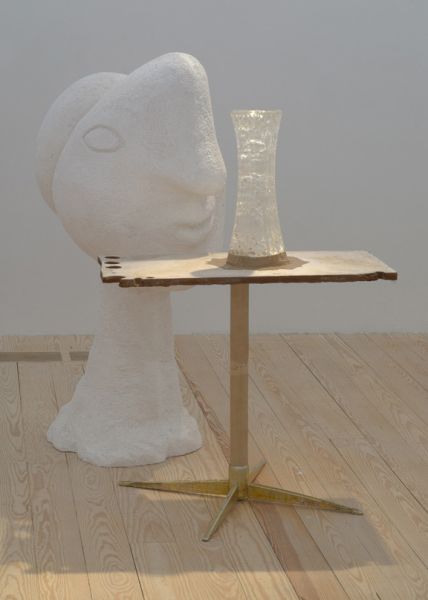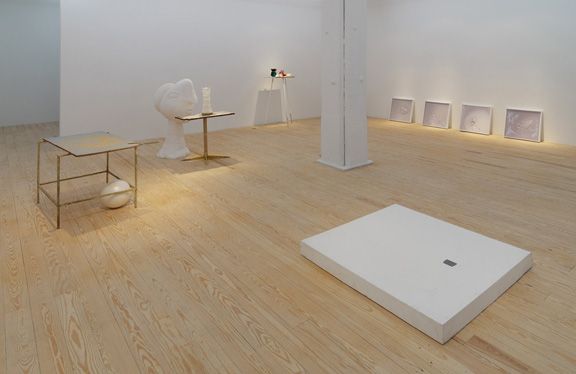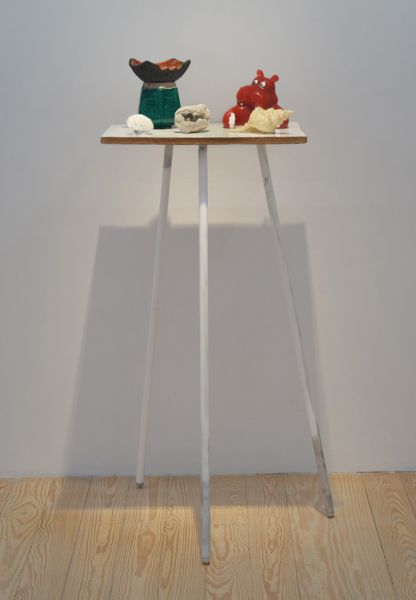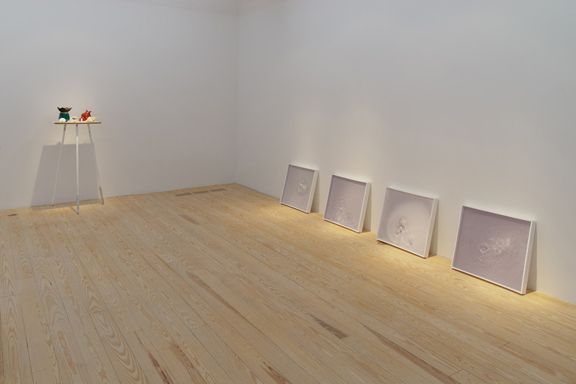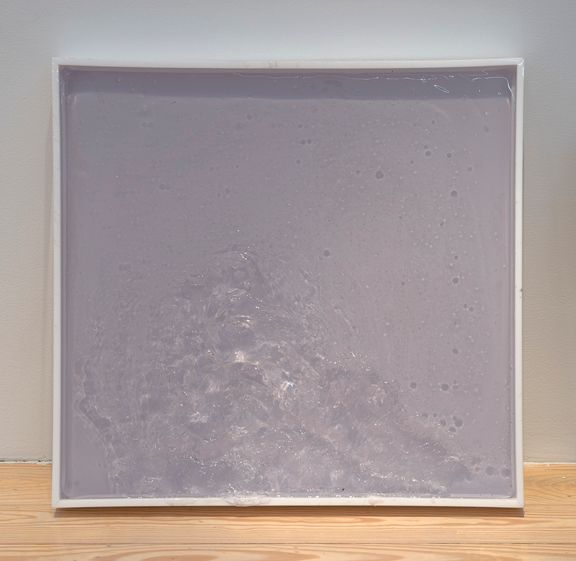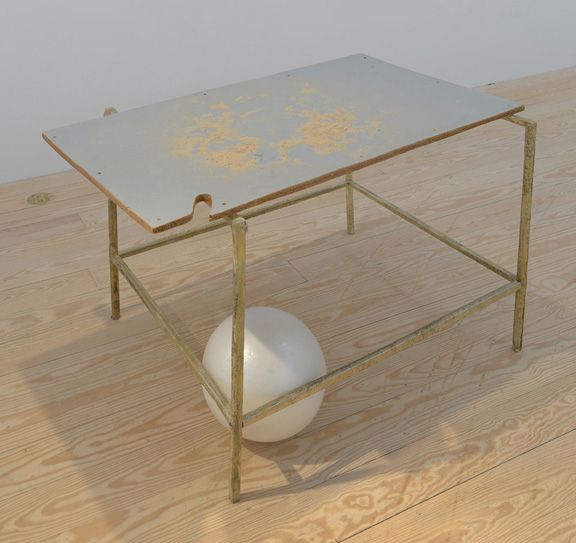HANY ARMANIOUS’ second New York solo exhibition at Foxy Production, Birth of Venus, further expands his lexicon of object-making. On entering the gallery the viewer is confronted with a number of arrangements of seemingly disparate elements, with each grouping carefully placed in relation to the others. A sparseness pervading the overall scene is disrupted by a number of small individual objects, and pockets of color – reds, greens, and subtle mauves – stand in relief to the monochrome of many of the surfaces in the space.
With an uncanny verisimilitude, Armanious has obsessively cast sculptures in resin, fiberglass, and pewter from molds of randomly found items, including a squeezed lump of putty; a ceramic 1970s ashtray; a polystyrene sphere; makeshift tabletops and bases; a haphazardly-mended plinth sitting alone, its sculpture long gone; and a large carved head, based on a sculpture by Picasso, that gazes at a vase taped to a workbench. Accompanying these elements is a series of Sneeze Paintings, flat-works inspired by the involuntary act of sneezing; in lilac tones with mesmerizing patterning, they sit propped against a wall of the gallery.
Botticelli’s The Birth of Venus depicts the nude goddess of love entering the world as a fully formed adult, blown to shore on a large scallop shell. Not unlike Venus herself, Armanious’ sculptural works emerge fully formed from their molds, resembling in every detail – except their materials – the original objects that they were cast from. Venus’s birth, the origin of desire and beauty, represents to the artist the act of casting, where he magically transforms the mass- produced, the provisional, the degraded and the cast-off into resonant and beautiful objects.
With a compulsive drive, Armanious delves deeply into the production and reception of sculpture: into the actions on materials that produce articulated forms; and into how a sense of beauty can be manufactured, defined and understood. He explores the ways an artwork can command a presence or its own aura within the exhibition space, and he complicates the relationship between sculpture and support by muddying their definitions and boundaries: his objects can be both sculptures and bases. The connections amongst elements in the arrangements and scenes he creates recall Robert Gober’s lyricism, yet the links that Armanious makes are less narrative in nature. There is a poeticism in his work that scrambles the semantics around the relationship of the original to the copy: he focuses primarily on the joy in the beholding of the exquisitely finished object.
Photography by Mark Woods.
